Advertisement
From Cone To Glass: Massachusetts Farmers Revive Historic Hops Crops For Local Craft Beer
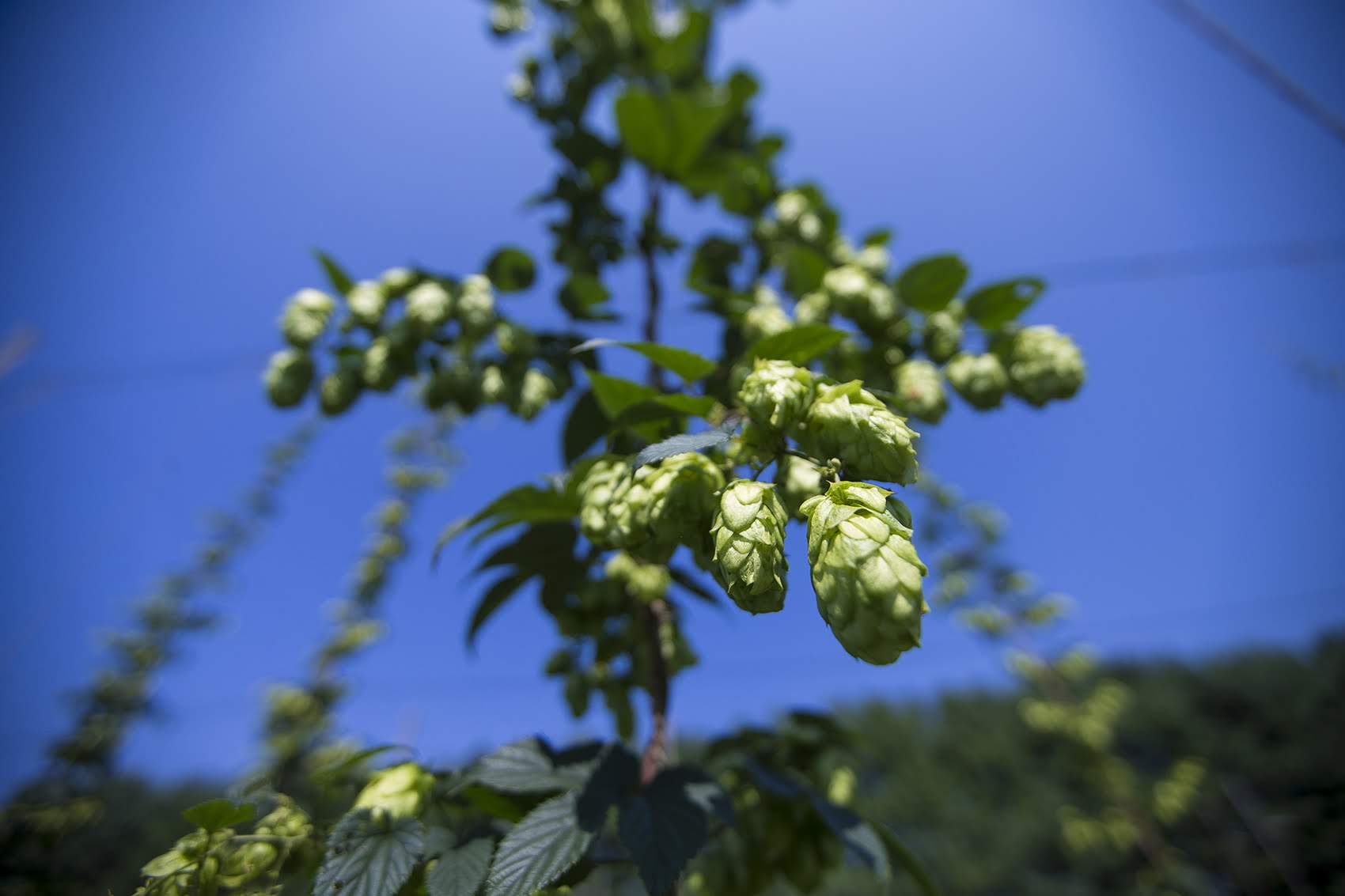
Can you name four ingredients typically used to brew beer?
Well, according to a German beer purity law (or "Reinheitsgebot"), there’s water, grain, yeast and hops.
Hops are grown all over the world. In the United States, they reign supreme in the Pacific Northwest. That wasn't always the case — the seeds of the U.S. commercial hops industry were planted in New England. Recently, the crop has been making a comeback here with help from brewers looking to make more locally-sourced beers.
One farm leading an agricultural revival of this historic "wicked weed" is Four Star Farms in Northfield, Massachusetts.
“These are the hops, they look like little pine cones,” Gene L’Etoile explained on a recent visit as he plucked a vibrant green cone from a bine spiraling up a 18-foot-tall string in one of his hops yards. (Just a note: Bines coil, while vines attach.)
Rows with 17,000 strings dangled from sturdy wires, like verdant, ruffled sculptures, at the farm abutting the banks of the Connecticut River.
L'Etoile grasped the hop flower between his thumbs and forefingers to expose its insides.
“This is the good part of the plant,” he said. “If you open it up, you see the yellow? That's lupulin — that's where the acids are, where all the essential oils and the aromas come from.”
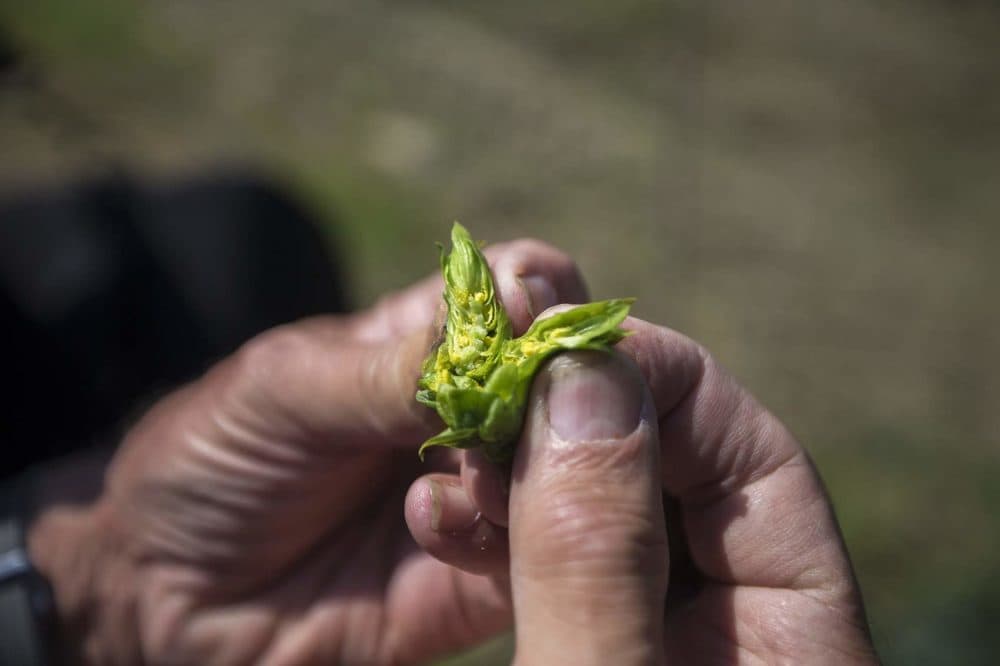
Fruity, floral aromas, flavors and bittering powers are what brewers use to balance the sweeter, malty characteristics in their beers. L’Etoile’s family grows nine hops varieties, including Magnum and Cascade, on 17 acres of land.
Before getting into the hops business, the family was growing turf on the farm they purchased in 1986. They still do. But 10 years ago, after L'Etoile's sons finished college, the family was looking for ways to diversify.
“Well, I like beer. The boys like beer — my wife hates beer,” he began, “but in the early 2000s there was a glut of hops.”
That overabundance was on the West Coast and prices were plummeting. But then there was a warehouse fire in Washington state that destroyed a two million pounds of hops that brewers around the country depended on. Demand shot up, and L’Etoile’s younger son — who was then assistant commissioner of agriculture for Massachusetts — suggested the timing could be right for growing hops here.
“We figured, well, we'll give it a shot,” L’Etoile recalled.
The state's craft beer industry was revving up, but cultivating hops in the Northeastern climate has always been challenging.
“Hops are very prone to disease. That's the main reason why they left New England,” the farmer said. “The Pilgrims brought rhizomes with them — they were Puritans but they were not teetotallers, they loved their beer.”
Advertisement
L'Etoile’s daughter-in-law, who handles marketing and brewer relations for the farm, loves this historical tale.
“If my teachers had told me that the Pilgrims really stopped here because they ran out of beer — ‘Stop the ship, we need to plant our hops and grow grain because the grogs are almost gone,” Liz L'Etoile said, laughing. “That's a much more evocative image in my head than, ‘Wow that's a beautiful rock we should stop there!' "
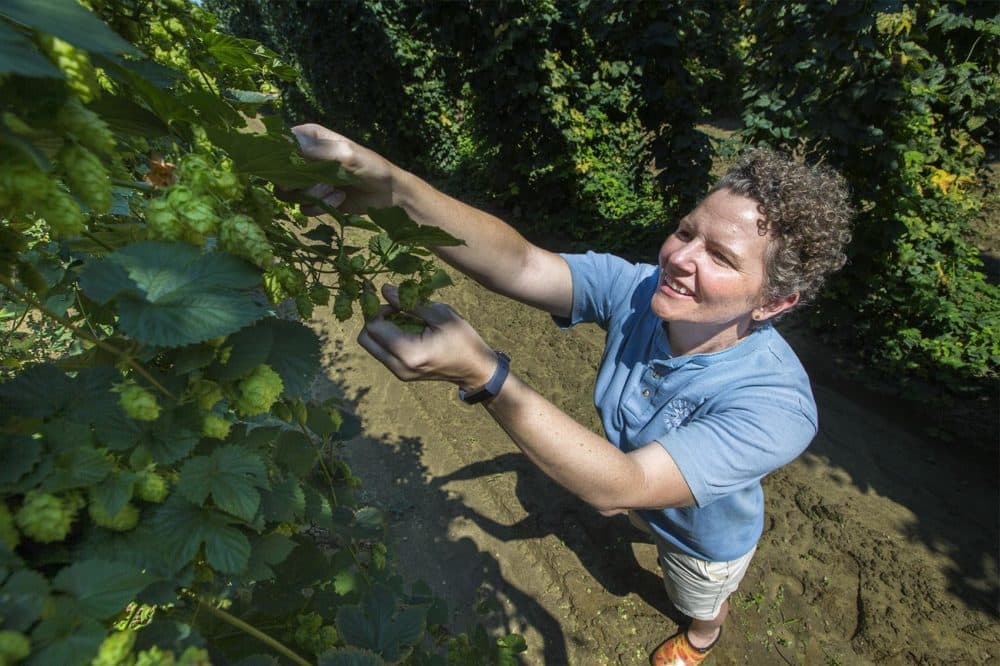
Everyone drank beer in Puritan times — for good reason, according to beer writer and former brewer Lauren Clark.
“You couldn't trust the water,” she said. “The water sources in those days were pretty questionable — or even fatal sometimes — with disease and pollution. Beer was the daily drink.”
Clark traces this history in her book, "Crafty Bastards: Beer in New England from the Mayflower to Modern Day." For the Pilgrims, she explained, brewing beer was a household task. They grew their own hops outside their homes. And a regional, commercial industry flourished and reached a golden age between the mid-1700s and 1830s in places including Woburn, Wilmington and Fitchburg, as well as in Vermont and New Hampshire. Ultimately pest and disease pressures — especially from Downy mildew — pushed the hops business west.
“What Four Star [Farms] is doing is continuing this historic commercial hop trade that used to be happening in New England and that disappeared over the last 150 years or so as the as the hop trade moved first to New York State and then to the Pacific Northwest," Clark said.
Other growers in Vermont, Maine and Massachusetts are fueling the hops renaissance, too. And some artisan brewers are harvesting small amounts to use for their own beers.
Even so, Gene L’Etoile said most people don’t know local hops exist or what might make East Coast hops different than those from out West.
“The hops out there, they’re grown in a desert and the micro-climate is very different than here. And the terroir is very different,” he explained, comparing the beer ingredient to wine. “It's just like grapes, you know, grapes from France are different than grapes from Washington state.”
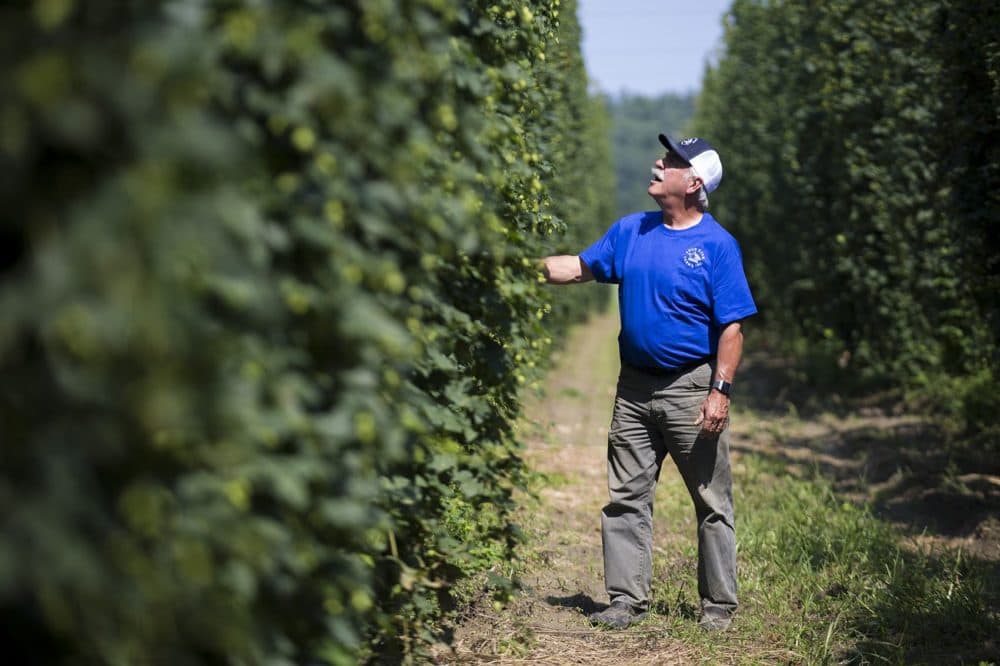
Liz L’Etoile elaborated, using a Cascade hop as an example. If it’s grown out west she said it usually adds citrusy, orange notes to a beer. “Ours takes it to the next level,” she said, “it's more in your face, and there's some spice notes in there.”
Other varieties channel sticky, stone fruit characteristics, a little bit of pineapple and melon. “Our soil, our climate, our growing practices really bring that out,” Liz said.
When they first started harvesting hops the farmers gave them away to brewers for free so they’d try them.
“We would bring them in big black plastic trash bags,” Gene L'Etoile said. “We dried them, we brought them and said, ‘Here, try this and let us know what you think. Sometimes they would call us and sometimes they wouldn't.”
Early adopters include Wormtown Brewery in Worcester, The People’s Pint in Greenfield and the Northampton Brewery. These days Four Star Farms supplies more than 50 customers around New England.
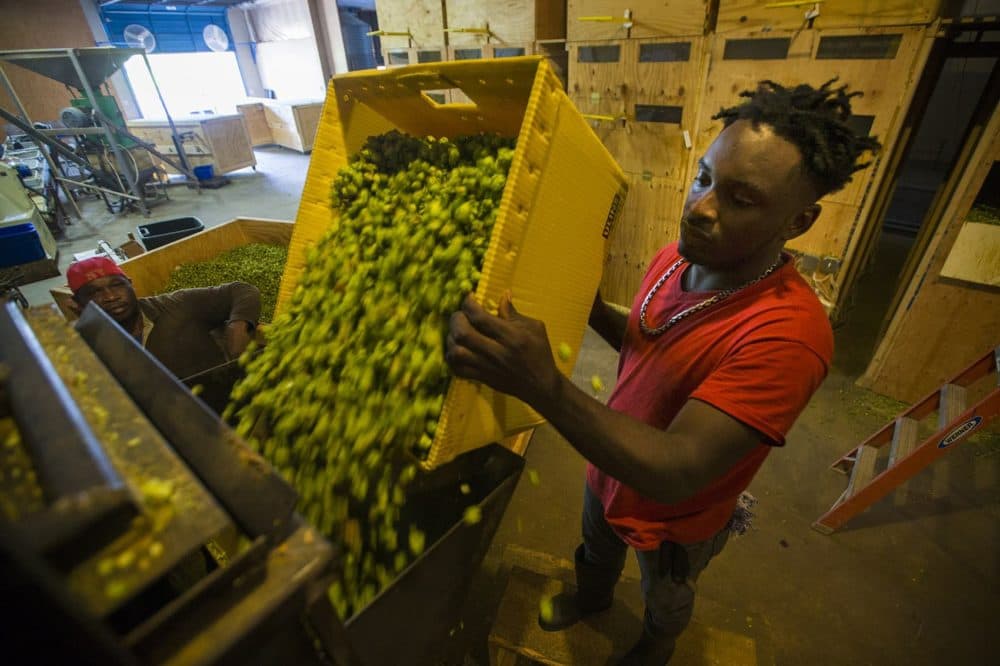
During harvest — which runs from mid-August to late September — hardy farm workers scooped dried hops from large, wooden holding crates and fed them into a big, loud baling machine. It compressed them into burlap sacks which are hand-sewn shut. The team will later pelletize a portion of the harvest, too, which preserves the flavor for storage.
Brewers looking to use hyper-fresh ingredients drive out to the farm to pick up what are known as "wet hops." Brewmaster Tyler Fitzpatrick traveled two hours to Northfield from Cambridge and said he barely fit all 400 pounds of Magnum hops into the back of his Subaru.
“I think I had bag of hops like scratching my ear at one point,” he recalled. “I was getting a little sleepy towards the end of the drive — these things are super powerful in terms of aromatics.”
Soon after retrieving his stash Fitzpatrick and his head brewer poured pungent green cones into a huge vessel at Lamplighter Brewing Company. The hops steeped in the hot liquid — like loose tea — for a cheekily-named autumn ale named "Wet Hop Cambridge Summer." Fitzpatrick hopes it captures their "bright, candied-citrus to tropical fruit hop flavors."
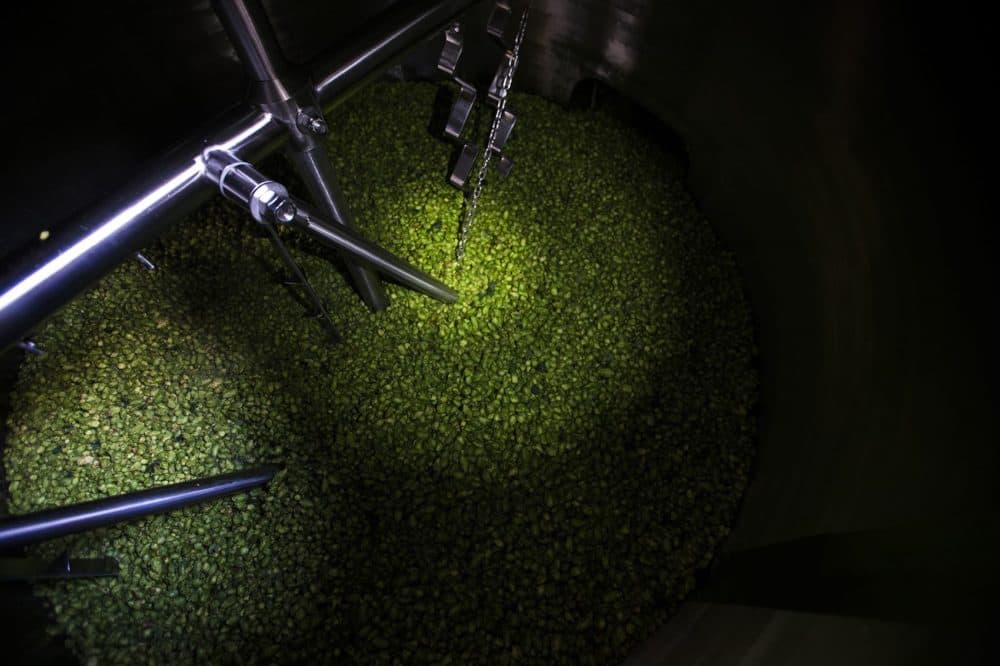
Local hops cost more than the west coast hops, but Fitzpatrick said they’re worth it.
“I have a lot of Massachusetts pride in me,” he explained. “I really enjoy supporting local farmers around here because I know what it's like to do that day in and day out — and it's grueling work — and I like to give them love when I can.”
The brewer uses other hops from Four Star Farms as well, and hopes to use even more in the future. He wants to do his part in nurturing a more sustainable local beer industry while preserving some agricultural history.
“It's always been known that Abigail Adams made some killer homebrew,” Fitzpatrick said, with hops she most definitely grew herself.
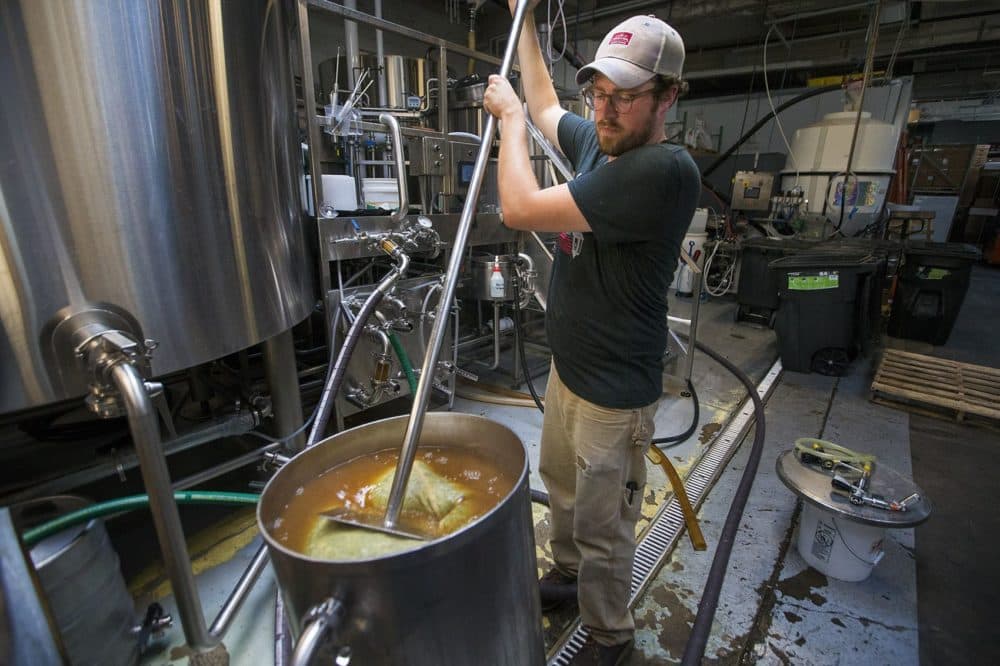
Liz L’Etoile is proud to being doing her share in the hops-growing continuum.
“This is where it all started a long, long time ago,” she said, “I have no idea if it will be anything like it was, but I can only hope it's better and lasts longer.”
L’Etoile told me this standing while standing in the farm’s experimental hops yard where the family is trying out a feral variety likely descended from the Pilgrims’ crops. She hopes they’ll help tell the story about products historically grown here — and about Yankee beer culture's endurance.
Now that the harvest is over and the family’s “hops rash” from that scratchy, “wicked weed” has healed, L'Etoile looks forward to tasting the local beers made from the fruits of their labors. Like Lamplighter’s Wet Hop Cambridge Summer, which just hit the shelves at the brewery last week.
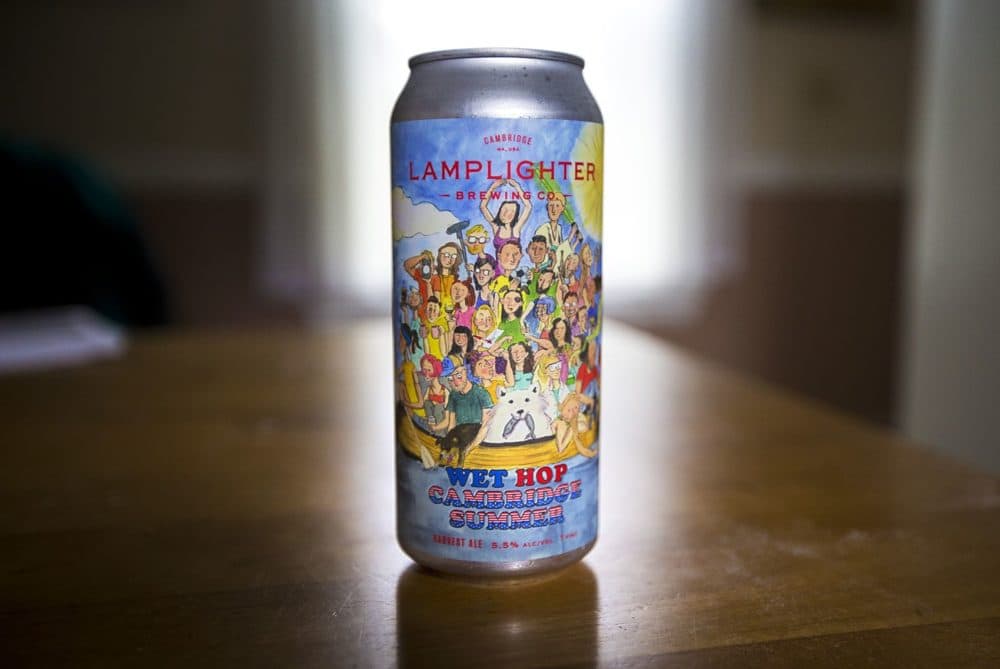
Correction: An earlier version of this post indicated the original Reinheitsgebot included yeast, while in fact the ingredient was only added in a contemporary law. The post has been updated.
This article was originally published on September 25, 2018.
This segment aired on September 25, 2018.
